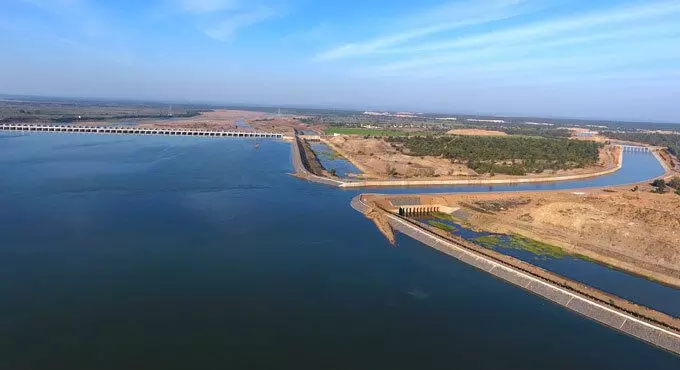Kaleshwaram: Hyderabad startup entrepreneur questions rationale of CAG calculation, calls it misleading
The Government of Telangana has branded the multi-stage lift irrigation project Kaleshwaram as a failed project and a white elephant, but there are people in the State who don’t believe that narrative.

HYDERABAD: The Government of Telangana has branded the multi-stage lift irrigation project Kaleshwaram as a failed project and a white elephant, but there are people in the State who don’t believe that narrative.
While the Comptroller and Auditor General (CAG) report, National Dam Safety Authority (NDSA) and Vigilance and Enforcement of the State reports have highlighted the technical fallacies that rendered a section of the Medigadda useless for the present season, the project had benefitted many a farmer with increased water table and irrigation.
However, the CAG report which calculated the latest costs of works, latest electricity charges, and latest land acquisition prices, did not consider the latest market rates of agricultural produce, despite a remarkable increase in the prices of various crops.
Also Read: With Kaleshwaram down, dip in water levels in major projects hints tough summer for Telangana
Nayini Anurag Reddy took to X and raised certain questions under “everything you need to know about the CAG report on Kaleshwaram" exposing the ill intentions in these reports.
“As seen in chapter 4.4 on finance, the total cost of the project calculated by the audit includes the latest costs of works, latest electricity charges, latest land acquisition prices, etc. How fair is it to calculate the ratio with an old numerator and the latest denominator?” he asked.
The CAG estimated agriculture income with market prices from 2014-15. However, calculating it with the latest prices will correct the error by bringing up the true value of agricultural produce at current prices.
• Agricultural income as per CAG: Rs 10,577 crore as of 2015-16 market prices.
• Agricultural income as per the latest market prices: Rs 29,468 crore
• Increase of Rs 18,900 crore
• Surprisingly, the total project cost estimated by the CAG also includes interest payments.
• The bigger surprise is that while calculating the annual interest, they have calculated the interest on the total project cost, which includes past interest payments and the prices of work yet to be done.
• While calculating the energy costs, the CAG has taken the maximum capacity amount, which is ideally never the real case.
He concluded that these simple corrections of annual benefits and expenditures would lead to a benefit-cost ratio of more than 1.5, which is economically viable, whereas the Government pegged the benefit-cost ratio (BCR) to every rupee spent as 52 paise.
Speaking to NewsTAP, Anurag Reddy said on Sunday the CAG in its report agreed to have calculated the BCR less and it should have been around 0.72 for every rupee the Government had spent. “However in the preface, the CAG still mentioned the BCR at 0.52,” he pointed out.
“The Congress Government and its media in the state, are mudslinging Kaleshwaram just because the CAG showed a BCR of less than 1, Should know that the same CAG also stated that Pranahita Chevella, Handri Neeva, Nettempadu, and Galeru Nagari, which were part of the Jalayagnam, are also economically unviable,” he said.
He opined that Kaleshwaram was not just a mere project where one could calculate its benefits on a piece of paper. How exactly can one calculate the mountains of indirect benefits, as water availability affects every industry, he wanted to know.
• Hyderabad, where one-third of the state lives, has guaranteed water assurance for the next 50 years due to Kaleshwaram. How shall we calculate the benefit of this?
• Many industries such as Pharma, and manufacturing, started booming in the state due to water availability. How shall we measure the benefit?
• Water is now available at certain places after decades, and the prices of agricultural lands have gone up. How shall we calculate this?
He summed up his argument and said that to understand the benefits of Kaleshwaram one must talk to a farmer whose once barren land, lacking water, now yielded three crops a year.



